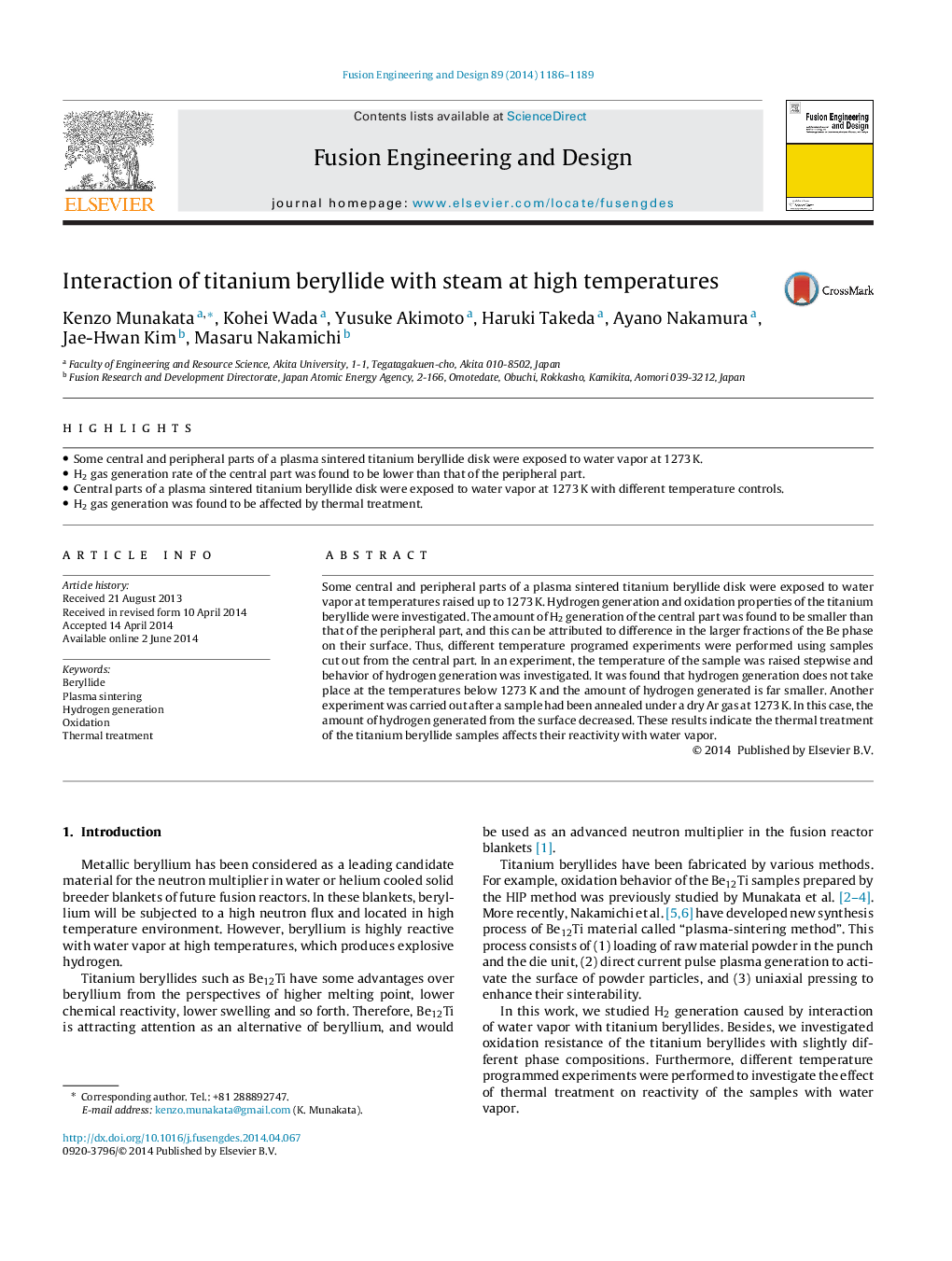| Article ID | Journal | Published Year | Pages | File Type |
|---|---|---|---|---|
| 271202 | Fusion Engineering and Design | 2014 | 4 Pages |
•Some central and peripheral parts of a plasma sintered titanium beryllide disk were exposed to water vapor at 1273 K.•H2 gas generation rate of the central part was found to be lower than that of the peripheral part.•Central parts of a plasma sintered titanium beryllide disk were exposed to water vapor at 1273 K with different temperature controls.•H2 gas generation was found to be affected by thermal treatment.
Some central and peripheral parts of a plasma sintered titanium beryllide disk were exposed to water vapor at temperatures raised up to 1273 K. Hydrogen generation and oxidation properties of the titanium beryllide were investigated. The amount of H2 generation of the central part was found to be smaller than that of the peripheral part, and this can be attributed to difference in the larger fractions of the Be phase on their surface. Thus, different temperature programed experiments were performed using samples cut out from the central part. In an experiment, the temperature of the sample was raised stepwise and behavior of hydrogen generation was investigated. It was found that hydrogen generation does not take place at the temperatures below 1273 K and the amount of hydrogen generated is far smaller. Another experiment was carried out after a sample had been annealed under a dry Ar gas at 1273 K. In this case, the amount of hydrogen generated from the surface decreased. These results indicate the thermal treatment of the titanium beryllide samples affects their reactivity with water vapor.
